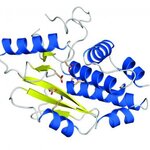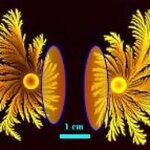Immunology

Could a hereditary illness ever spread by contamination? Researchers at the CNRS Laboratoire d’enzymologie et biochimie structurales, studying Huntington’s disease in collaboration with Professor Ron Kopito’s team at Stanford University, have shown that the normal form of huntingtin protein can acquire an abnormal form without any modification of its genetic code. These researchers observed that clumps of abnormal huntingtin protein, characteristic of Huntington’s disease, could induce clumping in the normal form of the protein.
Huntington’s disease is a genetic neurological disorder causing…

In recent decades, viral epidemics have risen in ferocity and quantity in continents around the globe. More and more people in not only places like Africa and South America, but also in Asia and parts of Europe have been affected by the spread of emergent and prolific viral diseases.
The Chickungunya (chicken-gun-ya) virus is responsible for some of the havoc wrecked by recent viral epidemics. Transmitted to humans by the Asian tiger mosquito, the chickungunya virus has become a target for vaccine efforts by a cooperative partnership between Top Institute Pharma (TI Pharma), Wageningen…

Influenza is and remains a disease to reckon with. Seasonal epidemics around the world kill several hundred thousand people every year. In the light of looming pandemics if bird flu strains develop the ability to infect humans easily, new drugs and vaccines are desperately sought. Researchers at the European Molecular Biology Laboratory (EMBL) and the joint Unit of Virus Host-Cell Interaction (UVHCI) of EMBL, the University Joseph Fourier (UJF) and the National Centre for Scientific Research (CNRS), in Grenoble, France, have now precisely defined an important drug target in influenza. In this…

In the year of the 200th anniversary of the birth of Darwin, researchers using comparative genomics have uncovered genetic clues about why some strains of the pathogen that causes Q fever, Coxiella burnetii, are more virulent than others.
Relevant? Well, sort of, though genetics came after Darwin, but the evolution of the pathogen makes it relevant and it also gives us a chance to remind you about Darwin Day here on February 12th.
Q fever is considered one of the most infectious diseases in the world since inhalation of a single bacterium alone is sufficient to kick-start…

Whenever humans create a new antibiotic, deadly bacteria can counter it by turning into new, indestructible super-bugs. That's why bacterial infection is the number one killer in hospitals today. But new research from Tel Aviv University may give drug developers the upper hand in outsmarting bacteria once and for all.
The secret weapon against a colony of bacteria may be to stress it with its own protection system, which forces it to reduce its population through ... cannibalism.
Cannibalism among bacteria, explains Prof. Ben-Jacob from Tel Aviv University's School of Physics and…

All life depends on peaceful coexistence with a swarm of microbial life inside us that performs vital services from helping to convert food to energy to protection from disease. With the help of a squid that uses a luminescent bacterium to create a predator-fooling light organ and a fish that uses a different strain of the same species of bacteria like a flashlight to illuminate the dark nooks of the reefs where it lives, scientists have found that gaining a single gene is enough for the microbe to switch host animals.
The finding reported in Nature by a team of scientists from…

Mold is icky. However, it has yielded one of the most important advances in medicine: antibiotics. There was a time when penicillin was the cure-all antibiotic, capable of quelling almost any one-celled invader.However, today this is not the case. Today’s bacteria are getting faster, stronger and more resistant to even our most aggressive antibiotics. This has prompted scientists to look in other nooks and crannies of our world to find the next solution to our growing resistant population of angry bacteria.
Staphylococcus aureus is the most infectious of the common staphylococcal species of…

MS is the result of damage to myelin - the protective sheath surrounding nerve fibres of the central nervous system - which interferes with messages between the brain and the body. For some people, MS is characterised by periods of relapse and remission while for others it has a progressive pattern. Symptoms range from loss of sight and mobility, fatigue, depression and cognitive problems. There is no cure and few effective treatments.
Ahead of the publication on Friday 30 January of a paper in The Lancet Neurology reporting the results of a trial involving stem cell transplantation…

Researchers at the University of British Columbia have discovered a mimic of one of "nature's antibiotics" that can be used to coat medical devices to prevent infection and rejection. The study, released today in the journal Chemistry and Biology, found that a synthetic form, short tethered cationic antimicrobial peptides (cationic peptide), can protect surfaces, like those of medical devices, killing bacteria and fungi that come into contact with them. Peptides are small proteins.
Medical devices such as surgical implants, catheters, hip replacements, and joint prostheses have the…

A new study finds swimming, having a private well or septic system, and other factors not involving food consumption were major risk factors for bacterial intestinal infections not occurring in outbreaks.
Outbreaks linked to food, such as the current Salmonella outbreak involving peanut butter that has sickened more than 500 people in 43 states, account for only about 10 percent of intestinal infections, which are medically termed as enteric infections, according to a new study in The Journal of Infectious Diseases. The study suggests that methods for controlling bacterial…